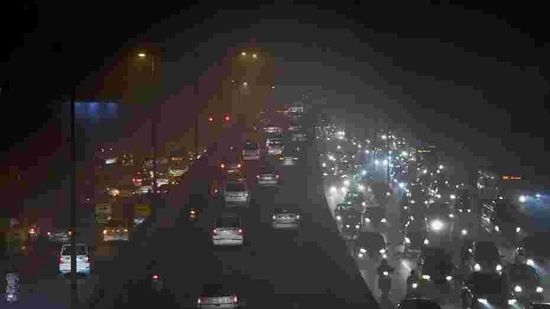‘Vehicles, unclean household fuels major CO sources’
The findings show that the total CO emissions in Delhi during the Covid-19 lockdown showed an 86.39% drop compared to regular days, as opposed to a 62.14% fall in Mumbai. It also showed that the biggest reason behind this reduction, especially in Delhi, was restrictions in traffic movement.
New Delhi: Vehicular emissions and the use of unclean household fuels are the major sources of carbon monoxide (CO) in Delhi, a study conducted by the Union ministry of earth sciences and the Indian Institute of Tropical Meteorology (IITM) has found.

The study, which focuses on the sources of CO in Delhi and Mumbai, recorded the levels of the pollutant during the Covid-19 lockdown — when vehicular movement, industrial operations and other financial activities were restricted severely — and compared it with emissions on regular days, when all of these sources were operational and contributing to emissions.
The findings show that the total CO emissions in Delhi during the Covid-19 lockdown showed an 86.39% drop compared to regular days, as opposed to a 62.14% fall in Mumbai. It also showed that the biggest reason behind this reduction, especially in Delhi, was restrictions in traffic movement.
In the Capital, CO emissions from vehicular movement fell from 31.01 gigagram/month (Gg/month) on regular days to just 3.1Gg/month during the lockdown. The use of unclean household fuel was the second biggest CO in Delhi contributor, adding 1.35 Gg/month when no curbs were in place. Notably, however, this number showed no deviation even during the lockdown.
“The major sources of CO in Delhi were transport and household during normal time. Transport was completely shut during the lockdown except for vehicles from law enforcement agencies, emergency services and that of essential supply chains. Not more than 10% of total vehicles were on the road, as also cross-checked with the total sale of petroleum products,” the study reads.
CO, a colourless and odourless gas, is highly toxic and produced by the incomplete combustion of fossil fuels, oil, coal, woods, and natural gas. Scientists said CO was more harmful than particulate matter, as it has the potential to persist in the atmosphere for a longer period and does not get washed away by rain as PM2.5 (particulate matter with diameter less than 2.5 micrometres) and PM10 (PM with diameter less than 10 micrometres) do.
“Exposure to CO is particularly harmful for the elderly, children and people who suffer from medical conditions such as heart and lung problems. We have examined the scientific processes responsible for the variability in CO during the Covid-19 lockdown in two of the largest megalopolises of India and the role of transport in influencing its concentration during the lockdown, and to understand the role of biofuel emissions,” said Gufran Beig of System of Air Quality Forecasting and Research (Safar) at IITM, who headed the study.
Beig added, “The CO data was collected from continuous Air Quality Monitoring Stations (AQMS) under the Safar network.”
Another important observation made by the study was the contribution of CO levels in Delhi’s air from neighbouring states. The findings of the study showed that because of the Delhi’s landlocked geography and the long lifespan of pollutant, the sources from long-range transport also added to CO levels in the city.
“CO has a long life and hence a significant contribution can come by the long-range transport from surrounding regions. The long-range transport of CO in Delhi, whereas wind reversal combined with emissions from slum clusters in Mumbai played a major role during the lockdown period,” the study said.




